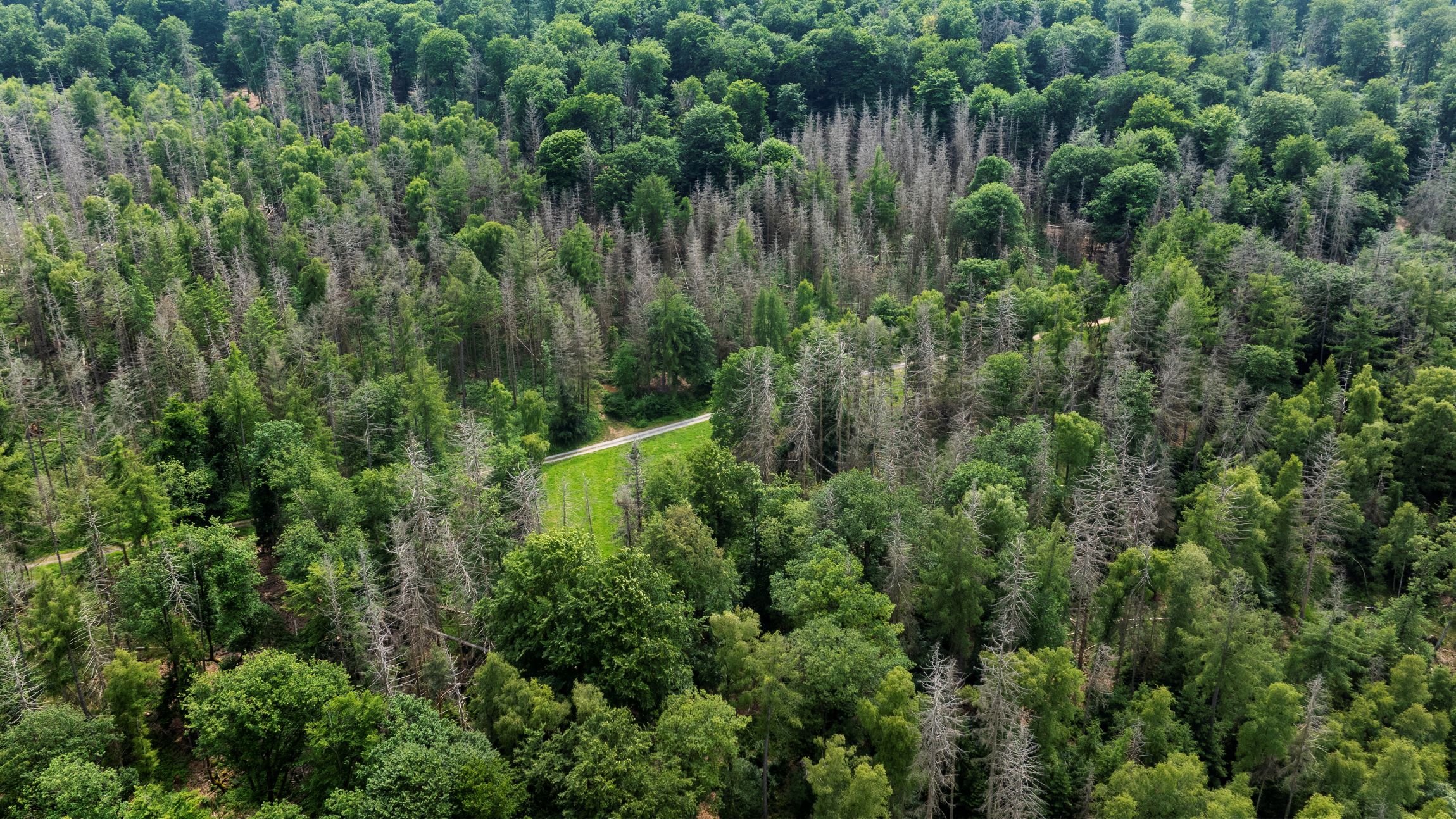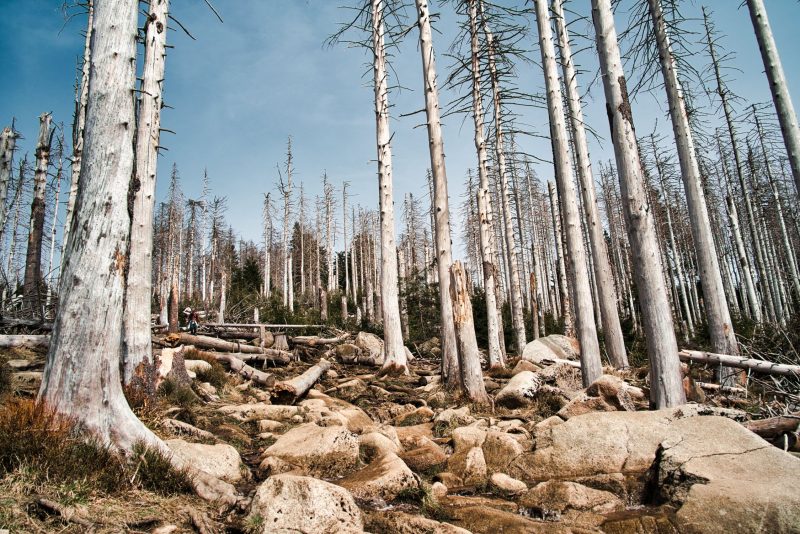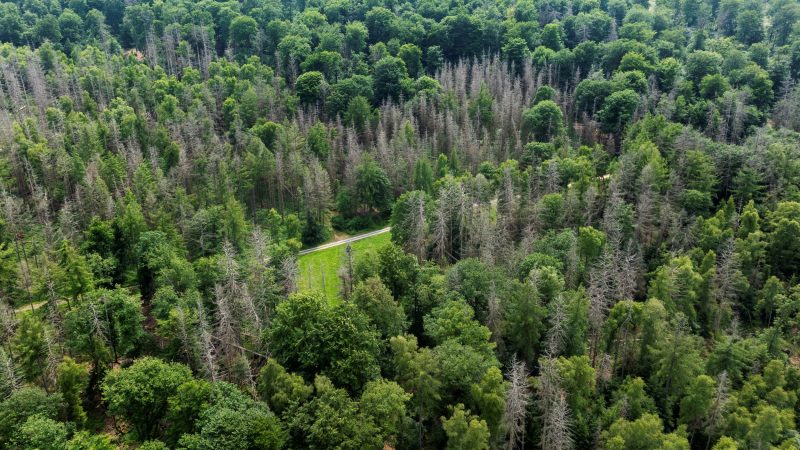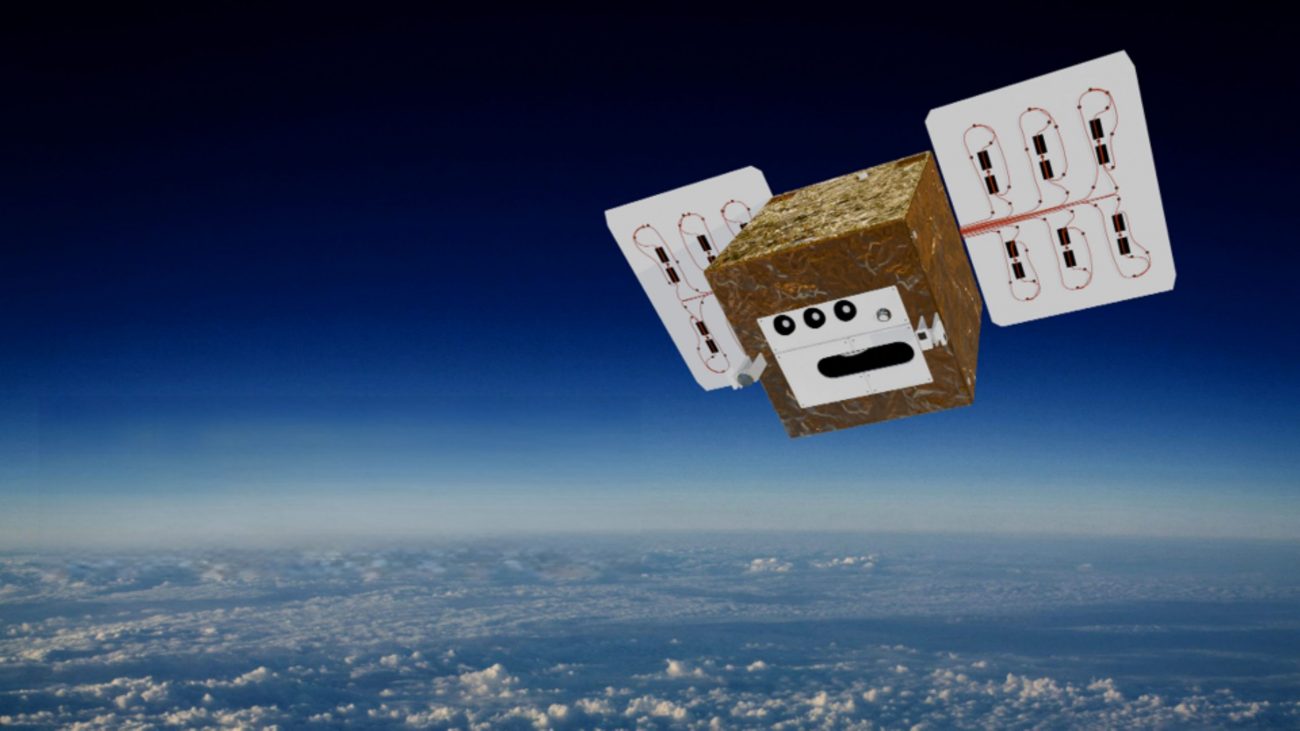
Forestry – Understanding and protecting forests
Forests under climate stress
Climate change is having an increasingly severe impact on our forests. Longer periods of drought, rising temperatures, and extreme weather events weaken trees and make them more susceptible to disease and pests. At the same time, natural regeneration processes are thrown out of balance and entire ecosystems are under pressure. Without targeted monitoring, much of the damage goes undetected for a long time—with serious consequences for biodiversity, climate protection, and our quality of life.

DIEGOSat in forestry
Forests are our green lungs – and with DIEGOSat, they can be monitored like never before. The satellite detects drought stress, disease outbreaks, and pest infestations at an early stage, helping to prevent damage. Long-term changes in forest cover can also be precisely documented. This creates a valuable data basis for sustainable forestry and the protection of this irreplaceable ecosystem. The images obtained by DIEGOSat in the mid-infrared at a wavelength of 4 µm with a spatial resolution of 120 m allow forest fires to be detected as soon as they start and their extent and emissions to be quantitatively assessed. For more information, see: Early warning system from space for fires and disasters

Forestry – Health monitoring and drought stress detection
DIEGOSat’s thermal infrared bands provide precise information about the surface temperature and moisture status of forest stands. Additional VNIR (visible and near-infrared) imaging with high spatial resolution enables the combination of thermal and spectral indices to detect drought stress, pest infestation, or disease outbreaks at an early stage. The measurements, which vary throughout the day, provide insights into the water balance and vitality of forests, facilitating targeted and sustainable management.
